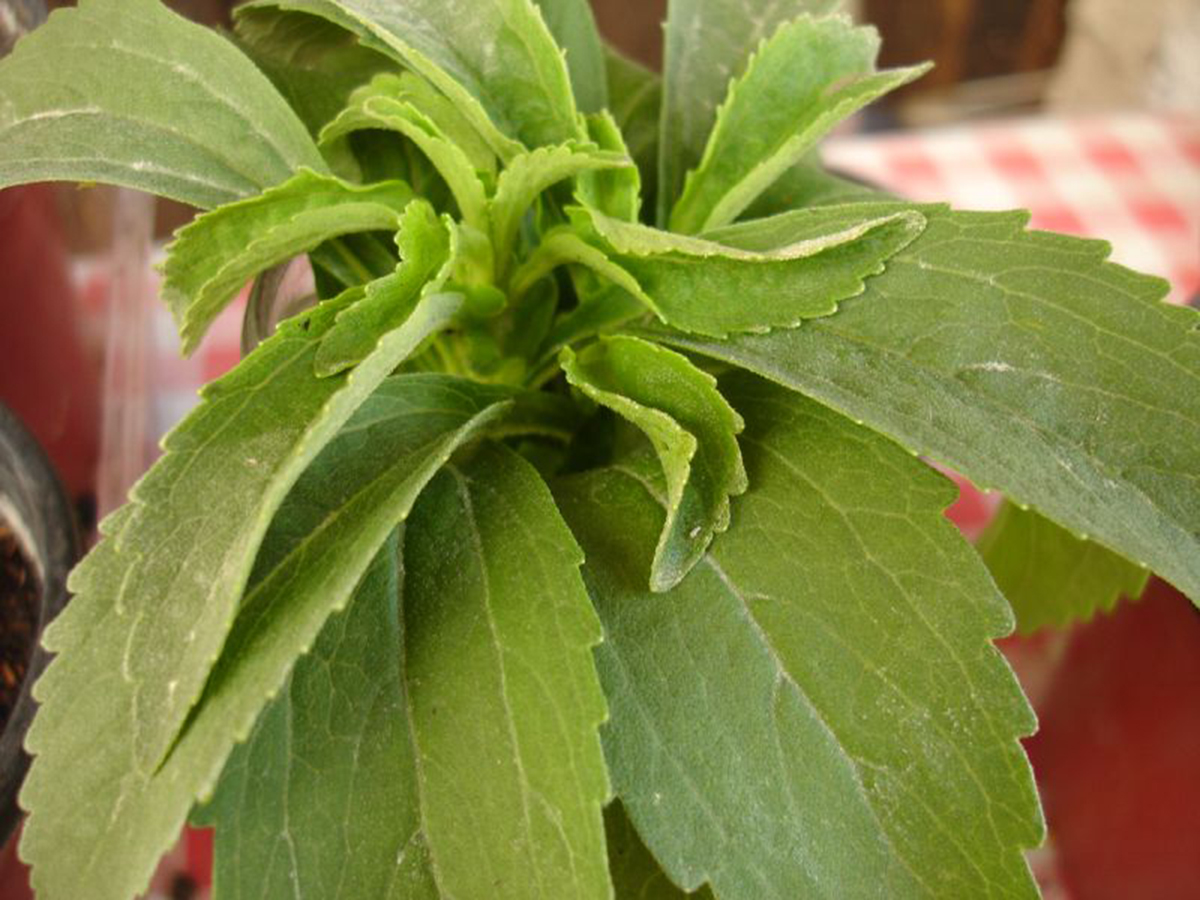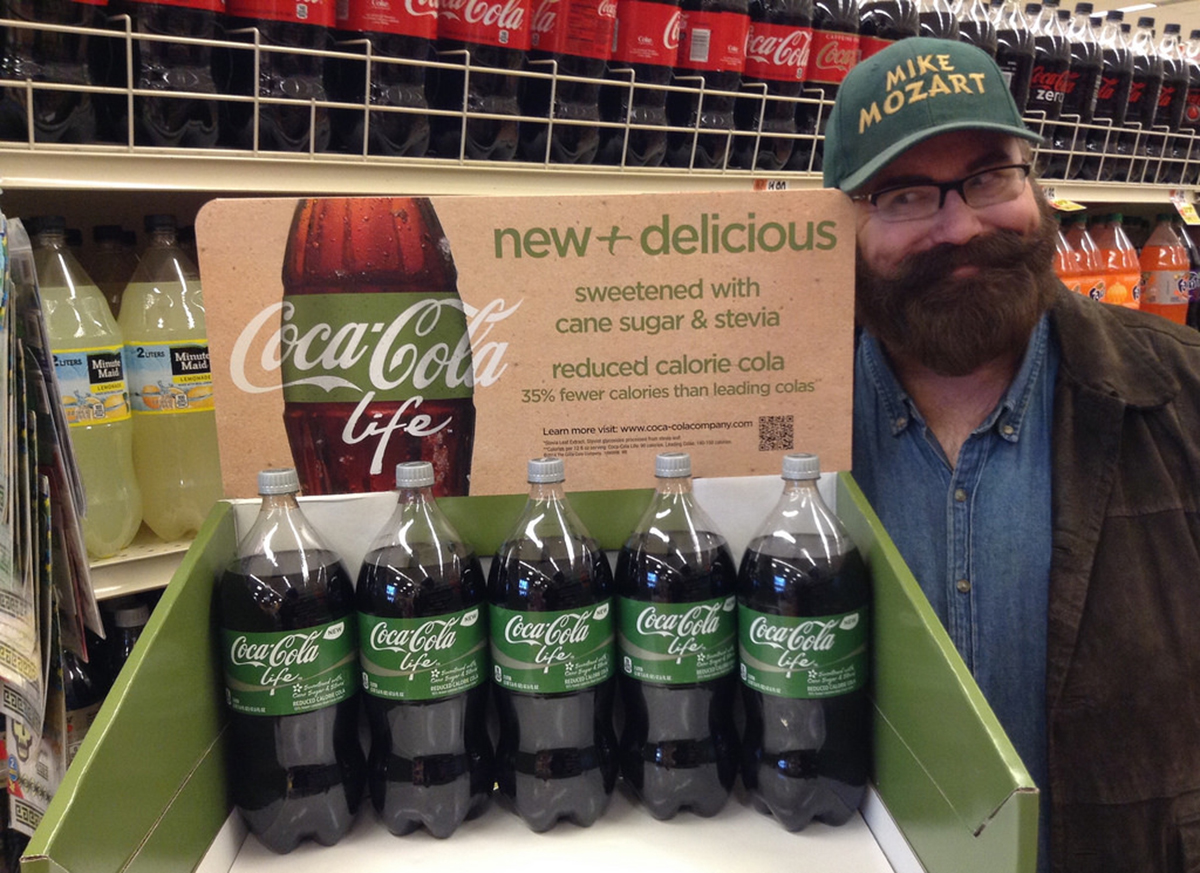Several years ago I accepted a consulting engagement to help develop a stevia sweetener for sale in a country that had just opened its markets to the South American herb. I am telling the story here with the permission of my client.

There are several challenges to making stevia taste like sugar. Stevia extract, the liquid, is easy to use but has a licorice- or anise-like aftertaste. It is also very easy to get too much stevia into a beverage, and the product doesn't add any bulk to baked goods or pastries or ice creams.
Natural Sweeteners Have to Be Made Unnatural for Practical Use
The way to get around the problem of the licorice-like aftertaste of stevia is to extract a group of chemicals known as the stevia rebaudosides, which are also known as steviol glycosides.
The problem with the rebaudiosides is, however, that they are 20,000 to 50,000 times sweeter than sugar. A tiny amount of the product makes a beverage sweet. Even a tenth of a gram (less than one-hundreth of a teaspoon) would make a cup of coffee or a soft drink undrinkable.
The question then was, how do we dilute stevia extract to make it really useful. We tried a number of substances to make the sweetener until we finally hit on one that actually works: Sugar. If you mix stevia with a little glucose, xylitol, erythritol, or maybe all three, then you can get the right amount of sweetness from a packet of the product.
Of course, adding sugar was exactly what we were trying to avoid. But the fact is, there are tiny amounts of sugar even in most "sugar free" products for the simple reason that otherwise there's no way to mix them. But that's not the only problem.
Causing Diabetes Instead of Preventing It
Dr. Eran Elinav, an immunologist at the Weizmann Institute of Science in Israel, and his colleagues recently published an article in the prestigious journal Nature about their experiments with mice. They found that artificial sweeteners changed the balance of species of bacteria in the mice's digestive tract in ways that cause blood glucose (sugar) levels to go up more quickly and return to normal more slowly after eating.
In both mice and people, high blood sugar levels are a driving force for a variety of diseases.
See Also: Say Yes To Stevia?
High insulin levels lock fat inside fat cells so they can't release it to be burned elsewhere in the body. And high insulin levels also cause cells all over the body to protect themselves from an inflowing flood of sugar by becoming "insulin resistant," less responsive to insulin. The pancreas attempts to compensate by producing even more insulin, cells become more insulin resistant, the pancreas produces still more insulin, and over a period of years eventually it "burns out" as insulin-producing beta cells become depleted. Artifical sweeteners accelerate this process by what they do to bacteria in the human gut.
How Diet Coke Can Be Dangerous
Just how do scientists know artificial sweeteners change bacteria in the colon that change the way our bodies use sugar?

Dr. Elinav and his research team gave three groups of mice water sweetened with aspartame (Nutrasweet), sucralose (Splenda), or cyclamates, and three groups of mice plain water, or water sweetened with table sugar (sucrose) or the kind of sugar the body uses directly (glucose). After a week, the scientists gave all the mice a hefty dose of glucose and measured how it affected blood glucose levels.
Having the Wrong Bacteria May Drive Diabetes and Weight Gain
Next the researchers gave all the mice antibiotics to kill the bacteria in their digestive tracts. This corrected the prediabetes in the mice that had been given water with artificial sweeteners. Finally, the researchers transplanted some of the bacteria that had been growing in the colons of the mice that became prediabetic into healthy mice, without giving them artificial sweeteners, and found that those mice also developed problems with blood sugar regulation. Moreover, they put on weight on their little hips and had high blood sugar levels even when they were not fed.
This explains, the researchers believe, why most people gain weight when they use artificial sweeteners, even if they consume fewer or the same number of calories, and even if they start exercising, too. Swigging down a Diet Coke (which is labeled for aspartame but also contains cyclamates) three or four times day, or drinking coffee sweetened with Sweet 'n Low all day, or using Splenda or cyclamates, encourages the growth of bacteria that are super-efficient at breaking down fibers into sugars, some of which get into the bloodstream.
Repeating the Experiment with Humans
Mice enthusiastically eat each other's feces. Humans do not. The Israelis researchers expected that there might be more individual differences in human volunteers, and there were. When Elinav and Segal repeated their experiment with humans, who were not kept in the same cage, they found that only 4 out of 7 volunteers developed blood glucose regulation problems after a week of using artificial sweeteners. But it only took a week for problems to show up.
So What Can We Do If Artificial Sweeteners Cause the Problems They Are Supposed to Prevent?
Here are some suggestions:
- If you aren't already diabetic, consume small amounts of real sugar less fequently. Get used to drinking unsweetened drinks and eating savory foods instead of sweets.
- If you are already diabetic, don't compound the problem by consuming large amounts of diet drinks or "no sugar added" desserts. Measure your blood sugar levels several times a day to know exactly how food and activity are affecting you.
- Whether you are diabetic or not, eat lots of probiotic foods, such as yogurt, sauerkraut, kimchi, and red wine. Maintaining healthy bacteria reduces your appetite, and also displaces some of the bacteria that make you want to eat more, more, more.
See Also: Top Ten Sources Of Aspartame
There is no evidence, by the way, that stevia has the same effects on gut bacteria as Nutrasweet, Splenda, and cyclamates. But it's not a bad idea to use stevia sparingly, too. The more you control your sweet tooth, the less harmful bacteria will control you.
- Suez J, Korem T, Zeevi D, Zilberman-Schapira G, Thaiss CA, Maza O, Israeli D, Zmora N, Gilad S, Weinberger A, Kuperman Y, Harmelin A, Kolodkin-Gal I, Shapiro H, Halpern Z, Segal E, Elinav E. Artificial sweeteners induce glucose intolerance by altering the gut microbiota. Nature. 2014 Sep 17. doi: 10.1038/nature13793. [Epub ahead of print]PMID: 25231862.Photo courtesy of Hardworkinghippy via Flickr: www.flickr.com/photos/hardworkinghippy/2634432687
- Photo courtesy of JeepersMedia via Flickr: www.flickr.com/photos/jeepersmedia/16060088781

